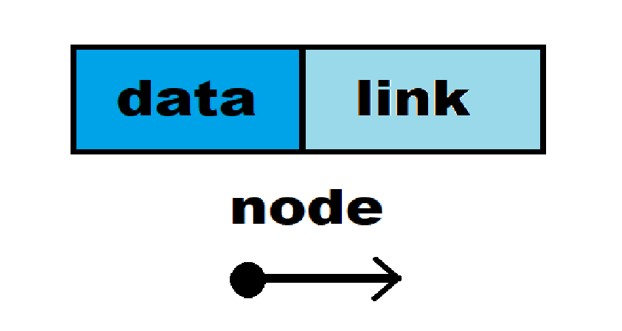
A linear data structure consisting of nodes, each containing data and a reference (or link) to the next node.
Types of Linked Lists


struct node {
int data;
struct node *link; // Self-referential structure
};
#include<stdio.h>
typedef struct s1{
int data;
struct s1 *link;
} node;
node *head = NULL;
node *memalloc(int d){
node *new = (node *)malloc(sizeof(node));
if(new == NULL){
printf(“Memory not allocated\n”);
exit(1);
}
new->data = d;
new->link = NULL;
return new;
}
void insertFront(int d){
node *new = memalloc(d);
if(head == NULL){
head = new;
return;
}
new->link = head;
head = new;
}
void insertEnd(int d){
node *new = memalloc(d);
if(head == NULL){
head = new;
return;
}
node *temp = head;
while(temp->link != NULL){
temp = temp->link;
}
temp->link = new;
}
int countList(){
int count = 0;
node *temp = head;
while(temp != NULL){
temp = temp->link;
count++;
}
printf(“The number of elements in the list: %d\n”, count);
return count;
}
void insertAtPosition(){
int pos, d;
int count = countList();
if(count == 0){
printf(“List is empty\n”);
printf(“Adding new node\n”);
printf(“Enter the value: “);
scanf(“%d”, &d);
insertFront(d);
return;
}
printf(“Enter the position between 0 – %d: “, count);
scanf(“%d”, &pos);
if(pos < 0 || pos > count){
printf(“Invalid position. Position out of bounds.\n”);
return;
}
printf(“Enter the value: “);
scanf(“%d”, &d);
if(pos == 0){
insertFront(d);
return;
}
if(pos == count){
insertEnd(d);
return;
}
node *new = memalloc(d);
node *temp = head;
for(int i = 1; i < pos; i++){
temp = temp->link;
}
new->link = temp->link;
temp->link = new;
}
void deleteFront(){
if(head == NULL){
printf(“List is empty\n”);
return;
}
node *temp = head;
head = temp->link;
printf(“%d is deleted\n”, temp->data);
free(temp);
}
void deleteEnd(){
if(head == NULL){
printf(“List is empty\n”);
return;
}
node *temp = head;
node *prev = NULL;
while(temp->link != NULL){
prev = temp;
temp = temp->link;
}
if(prev != NULL){
prev->link = NULL;
} else {
head = NULL;
}
printf(“%d is deleted\n”, temp->data);
free(temp);
}
void displayList(){
node *temp = head;
printf(“Your data elements are: “);
while(temp != NULL){
printf(“%d “, temp->data);
temp = temp->link;
}
printf(“\n”);
}
int main(){
int option, data;
while(1){
printf(“1. Insert Front\n2. Insert End\n3. Insert at Position\n4. Delete Front\n5. Delete End\n6. Display List\n7. Exit\n”);
printf(“Enter your option: “);
scanf(“%d”, &option);
switch(option){
case 1:
printf(“Enter the value: “);
scanf(“%d”, &data);
insertFront(data);
break;
case 2:
printf(“Enter the value: “);
scanf(“%d”, &data);
insertEnd(data);
break;
case 3:
insertAtPosition();
break;
case 4:
deleteFront();
break;
case 5:
deleteEnd();
break;
case 6:
displayList();
break;
case 7:
exit(0);
default:
printf(“Invalid option\n”);
}
}
return 0;
}
#include <stdio.h>
#include <stdlib.h>
typedef struct Node {
int data;
struct Node *next;
} Node;
Node *head = NULL;
Node *memalloc(int value) {
Node *newNode = (Node*)malloc(sizeof(Node));
if (newNode == NULL) {
printf(“Memory allocation failed”);
exit(0);
}
newNode->data = value;
newNode->next = NULL;
return newNode;
}
void insertAtEnd(int value) {
Node *newNode = memalloc(value);
if (head == NULL) {
head = newNode;
return;
}
Node *temp = head;
while (temp->next != NULL) {
temp = temp->next;
}
temp->next = newNode;
}
void displayList() {
Node *temp = head;
printf(“The elements in the list are: “);
while (temp != NULL) {
printf(“%d “, temp->data);
temp = temp->next;
}X
printf(“\n”);
}
int main() {
int value, nodeCount;
printf(“Enter the number of nodes: “);
scanf(“%d”, &nodeCount);
for (int i = 0; i < nodeCount; i++) {
printf(“Enter the value: “);
scanf(“%d”, &value);
insertAtEnd(value);
}
displayList();
return 0;
}
#include<stdio.h>
#include<stdlib.h>
typedef struct Node {
int data;
struct Node *next;
} Node;
Node *head = NULL;
Node *memalloc(int value) {
Node *newNode = (Node *)malloc(sizeof(Node));
if(newNode == NULL) {
printf(“Memory not allocated”);
exit(1);
}
newNode->data = value;
newNode->next = NULL;
return newNode;
}
void insertAtFront(int value) {
Node *newNode = memalloc(value);
if(head == NULL) {
head = newNode;
return;
}
newNode->next = head;
head = newNode;
}
void insertAtEnd(int value) {
Node *newNode = memalloc(value);
if(head == NULL) {
head = newNode;
return;
}
Node *temp = head;
while(temp->next != NULL) {
temp = temp->next;
}
temp->next = newNode;
}
int countList() {
int count = 0;
Node *temp = head;
while(temp != NULL) {
temp = temp->next;
count++;
}
printf(“The number of elements in the list: %d\n”, count);
return count;
}
void insertAtPosition() {
int position, value;
int listSize = countList();
if(listSize == 0) {
printf(“List is empty\nAdding new node\nEnter the value: “);
scanf(“%d”, &value);
insertAtFront(value);
return;
}
printf(“Enter the position between 0 – %d: “, listSize);
scanf(“%d”, &position);
if(position < 0 || position > listSize) {
printf(“Invalid position or position out of bounds.\n”);
return;
}
printf(“Enter the value: “);
scanf(“%d”, &value);
if(position == 0) {
insertAtFront(value);
return;
}
if(position == listSize) {
insertAtEnd(value);
return;
}
Node *newNode = memalloc(value);
Node *temp = head;
for(int i = 1; i < position; i++) {
temp = temp->next;
}
newNode->next = temp->next;
temp->next = newNode;
}
void displayList() {
Node *temp = head;
printf(“\nYour data elements are: “);
while(temp != NULL) {
printf(“%d “, temp->data);
temp = temp->next;
}
printf(“\n”);
}
int main() {
int option, value;
while(1) {
printf(“1. Insert at Front\n2. Insert at End\n3. Insert at Position\n4. Display List\n5. Exit\n”);
printf(“Enter your option: “);
scanf(“%d”, &option);
switch(option) {
case 1:
printf(“Enter the value: “);
scanf(“%d”, &value);
insertAtFront(value);
system(“cls”);
break;
case 2:
printf(“Enter the value: “);
scanf(“%d”, &value);
insertAtEnd(value);
system(“cls”);
break;
case 3:
insertAtPosition();
system(“cls”);
break;
case 4:
displayList();
break;
case 5:
exit(0);
}
}
return 0;
}
Indian Institute of Embedded Systems – IIES